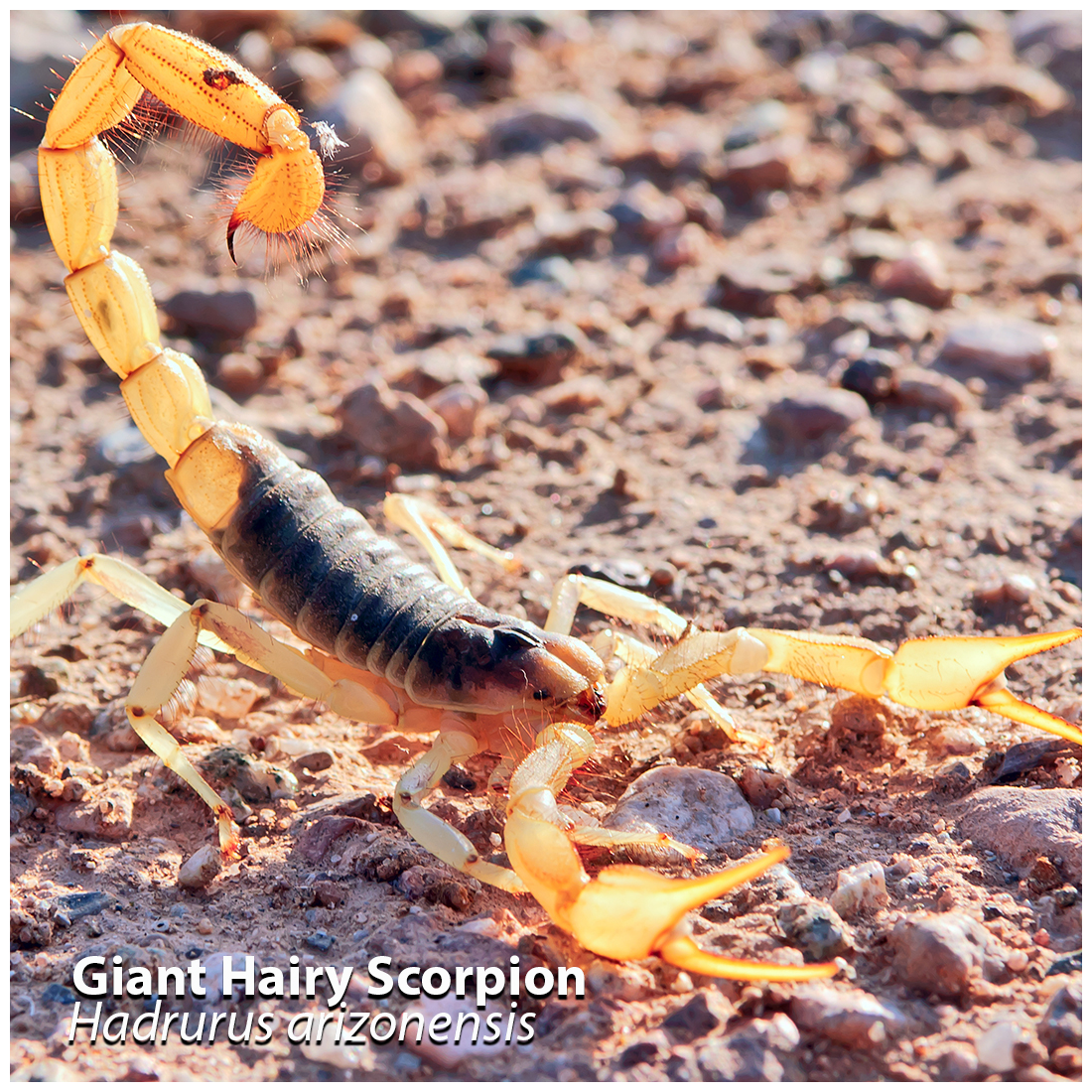
Arizona Scorpions
Unraveling the Mystery of Arizona's Scorpions
Welcome to the desert wonderland of Arizona, where the landscape is alive with all sorts of fascinating creatures, including the enigmatic scorpion. While these arachnids might send shivers down your spine, they play a vital role in maintaining the delicate balance of our ecosystem. Join us as we delve into the world of Arizona's most popular scorpion species, where they live, what they eat, and how to handle an encounter like a true desert dweller.
Ecology
While scorpions are masters of survival, they face natural adversaries within their ecosystem. Not only do they prey upon each other, but they also serve as food for various creatures like birds, lizards, snakes, various rodents, and bats.
Scorpions give birth to live young throughout the summer months. Their offspring are born underdeveloped and continue to grow until their first molt, which typically occurs within 7 to 21 days, depending on species. Newborns instinctively climb onto their mother's back for safety, where they remain until they mature. However, they face risks of becoming prey, even to their own mother, if they fall off.
One of the most intriguing aspects of scorpions is their fluorescence under ultraviolet light. Observing this phenomenon at night unveils their nocturnal behaviors, including hunting, mating, and burrow digging, providing insight into their concealed lives within the desert ecosystem and even in residential areas.
Arizona's Most Common Scorpion Species
1. Arizona Bark Scorpion (Centruroides sculpturatus)
 Habitat: Arizona bark scorpions are nocturnal creatures that seek shelter during the day in cool, dark places such as under rocks, in cracks and crevices, and inside buildings.
Habitat: Arizona bark scorpions are nocturnal creatures that seek shelter during the day in cool, dark places such as under rocks, in cracks and crevices, and inside buildings.
Where to Spot Them: Keep an eye out for these elusive critters in your backyard, garage, or even inside your house, especially during the warmer months.
Diet: Bark scorpions are skilled hunters, preying on insects, spiders, and other small arthropods.
Encounter Protocol: If you come across a bark scorpion, exercise caution and avoid provoking it. Seek medical attention immediately if stung, especially if you experience severe symptoms.
2. Stripe-Tailed Scorpion (Paravaejovis spinigerus)
 Habitat: Stripe-tailed scorpions prefer arid environments and can be found in rocky areas, sandy washes, and desert landscapes.
Habitat: Stripe-tailed scorpions prefer arid environments and can be found in rocky areas, sandy washes, and desert landscapes.
Where to Spot Them: Look for these distinctive scorpions under rocks, logs, or debris, as they seek shelter from the scorching desert sun. Stripe-tailed scorpions have a thicker tail than bark scorpions that include brown or tan stripes.
Diet: Stripe-tailed scorpions are opportunistic feeders, consuming a variety of insects and small invertebrates.
Encounter Protocol: Admire these fascinating creatures from a safe distance and avoid handling them to prevent accidental stings. Stripe-tailed scorpion venom, while present, is not as potent as other scorpion species.
3. Giant Hairy Scorpion (Hadrurus arizonensis)
 Habitat: Giant hairy scorpions prefer Arizona's desert regions with loose, sandy soil and sparse vegetation.
Habitat: Giant hairy scorpions prefer Arizona's desert regions with loose, sandy soil and sparse vegetation.
Where to Spot Them: Keep an eye out for these impressive scorpions in desert habitats, particularly in areas with sandy substrates or lose soil in Western and Southern Arizona. Although these are burrowing scorpions, they are often found under rocks or debris containing moisture. Look for the course reddish-brown hairs that give this scorpion its name.
Diet: Giant hairy scorpions are carnivorous, feeding on insects, spiders, and occasionally small vertebrates.
Encounter Protocol: Approach with caution and avoid disturbing their burrows, as they may become defensive if threatened.
Encountering Scorpions in the Wild
While encountering a scorpion in the wild can be a thrilling experience, it's essential to exercise caution to avoid any potential mishaps. Remember these tips:
- Watch Your Step: When exploring desert landscapes, watch where you step and avoid reaching into dark, secluded areas without first checking for scorpions.
- Shake Out Your Shoes: Before putting on your shoes or boots, give them a good shake to dislodge any hiding scorpions.
- Use a Black Light: Consider using a black light at night to spot scorpions, as their exoskeletons glow under UV light.
Final Thoughts
Scorpions may have a fearsome reputation, but they are an integral part of Arizona's desert ecosystem. By understanding their behavior and respecting their space, we can coexist with these remarkable creatures while enjoying the beauty of the desert wilderness. So, the next time you encounter a scorpion in the wild, take a moment to appreciate its unique beauty and the vital role it plays in the intricate web of desert life.

